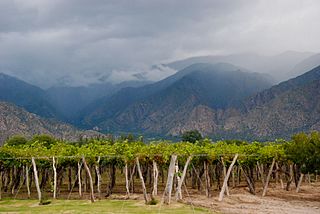Like many places around the world, Chile has seen its fair share of ups and downs over the last few decades. Just over a generation ago, you would have been absolutely mad to come to Chile. Back then, the country was experiencing wild inflation and instability and was one of the more dangerous places in South America.
The last 15 or 20 years have been relatively pleasant in Chile, but for most of that time, the country usually made sense only for certain tourists and passive investors. It’s a long flight from just about anywhere other than Argentina, and for most people, living in Chile in the 90s probably would have felt like dropping out of society.
These days, thanks in part to a strong currency, respect for private property, and an increasingly attractive social scene, Chile really is beginning to make a name for itself and is becoming one of the premier “safe havens” in the Western Hemisphere.
Geographically, Chile has always been a stronghold of sorts. The country’s carrying capacity (the maximum population that can be supported by local water and food resources) is several times higher than its current population, and it is separated from the rest of the South American continent by the Andes Mountains and the Atacama Desert.
When you match this with a stable economy, fairly simple tax code, and lots of incentives for new businesses, it starts to make sense that more and more people are beginning to look at Chile a little more seriously.
Internationalizing your life is a big step, and, while moving one’s residence or investments from the familiarity of the US or Europe seems like a leap, planting a flag in Chile can be a lot less intimidating than many places and can serve several purposes at the same time.
Chile isn’t just a safe place to park some savings (e.g., with Chilean real estate), it’s also a country with lots of economic opportunities – where entrepreneurs and investors have the potential to make fortunes. More services are becoming readily available, and jobs are plentiful, which means it’s beginning to appeal to a much larger segment of potential ex-pats.
Apart from Chile’s strong economic fundamentals, one thing people don’t talk about very much is the cultural atmosphere here, something that I think is absolutely critical. A country can make all the financial sense in the world, but if it’s still seen as “backward” or dull or boring, it might be a while before much comes of the place.
When you travel around central Chile these days, even if it’s just for a week or two, it becomes apparent very quickly that this country really is on the cusp of a whole new chapter in its history, a chapter where it becomes much more important, not just in Latin America, but in the world.

Luckily, Chileans are overall quite accepting of foreigners, so you don’t have the same ugly division of cultures that exists in many other parts of the world with large ex-pat populations.
Chile already has the foundation (it’s had that for years), but socially speaking, the country is really beginning to take off. Instead of just being attractive economically, moving to Chile these days is starting to become “trendy” because of the lifestyle that you can find here. Normally, this is the stage when things start to move a lot faster, and 2013 very well may be a pivotal year for Chile.
You can already see this happening on a smaller scale in certain neighborhoods and towns in central Chile, such as Providencia (Santiago), Pichilemu, and Machalí, but these same kinds of urban/semi-urban makeovers (and related price increases) are most likely going to start happening on a much larger scale.
Property prices throughout the central regions of Chile have been increasing significantly. For example, agricultural land has increased between 30% and 40% over the last three years. Average rental prices were up close over 50% in Rancagua and parts of Pichilemu last year, both of which were covered in the Chile Property Investment Guide 2012 edition. It’s quite possible we’re going to start seeing these same sorts of price movements all across the country.
If you are considering Chile as a possible future destination, you might want to make performing your due diligence one of your top priorities. Arriving to the party late probably won’t be nearly as much fun as getting here early.
Darren Kaiser is an American expatriate and current resident of Chile. He is a small business owner, journalist, and investor. You can find more at his website https://www.darrenkaiser.com.
Photo Credits:
“HOMER’S Beauty of WOMAN“



